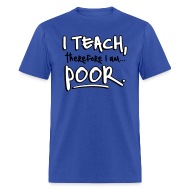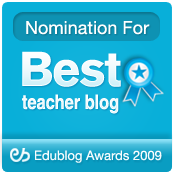Yes, indeed, I should have posted this at the BEGINNING of the tournament instead of at the end, but hey, better late than never, right?
Here is the complete, 64-team bracket for May Gladness 2020!
Click on the image to make it bigger.
I am an Amazon.com Affiliate, and I warmly invite you to shop using my store!
Try Amazon Prime 30-Day Free Trial
Join HBO Free Trial
Try Amazon Prime 30-Day Free Trial
Join HBO Free Trial
Thursday, May 21, 2020
Monday, May 18, 2020
May Gladness - The Final Four
For anyone who is reading this -- OOPS, I totally forgot to post the Elite/Great 8! So here is the link for that video, in case you still want to go back and check it out.
But now, the Final Four video is live, and you can use this Google form to vote! Vote quickly, though, as this round only lasts 2 days!
But now, the Final Four video is live, and you can use this Google form to vote! Vote quickly, though, as this round only lasts 2 days!
Monday, May 11, 2020
May Gladness - Sweet 16
It's time for the Sweet 16! Or is it Super 16? Either way, it's Alliteration!
We've narrowed down the bracket to our sixteen top contenders. Who will move on to the next round? Well, that's up to you!
Check out the Sweet 16 video we made and then use this Google form to cast your votes by May 13th.
We've narrowed down the bracket to our sixteen top contenders. Who will move on to the next round? Well, that's up to you!
Check out the Sweet 16 video we made and then use this Google form to cast your votes by May 13th.
Friday, May 08, 2020
May Gladness - Round of 32
Hey everyone,
Thanks for keeping an eye out for updates on the May Gladness tournament. We had almost 500 entries in the first round, and that is ah-MAY-zing! Let's see if we can ramp that up even going forward!
Andrew and I made a new video and prepared a new Google form for the voting. The match-ups are WAY more difficult this time, with some really tough choices in there. Please check out our "pre-game" show, then use the Google form to vote!
All shares and forwards of this are appreciated! Maybe John Krazinski will actually take notice!
Thanks for keeping an eye out for updates on the May Gladness tournament. We had almost 500 entries in the first round, and that is ah-MAY-zing! Let's see if we can ramp that up even going forward!
Andrew and I made a new video and prepared a new Google form for the voting. The match-ups are WAY more difficult this time, with some really tough choices in there. Please check out our "pre-game" show, then use the Google form to vote!
All shares and forwards of this are appreciated! Maybe John Krazinski will actually take notice!
Sunday, May 03, 2020
May Gladness
Hello, everyone, and welcome to the opening round of May Gladness!
My son Andrew and I put together a complete bracket of 64 things that, in general, make people happy. We are asking for YOUR votes to determine the winner of each match-up! All you have to do is fill out the Google form with your choice in each contest! Then share the form with everyone you know so we can have maximum participation!
This video has the Google form in its description. If you don't want to watch the video - but we hope you will, because it's a blast - here is the direct link for the Google form.
Google Form - Round of 64
Enjoy!
My son Andrew and I put together a complete bracket of 64 things that, in general, make people happy. We are asking for YOUR votes to determine the winner of each match-up! All you have to do is fill out the Google form with your choice in each contest! Then share the form with everyone you know so we can have maximum participation!
This video has the Google form in its description. If you don't want to watch the video - but we hope you will, because it's a blast - here is the direct link for the Google form.
Google Form - Round of 64
Enjoy!
Sunday, April 26, 2020
The Pearson Olympics
A few weeks ago, my son Andrew and I decided that, I’d there weren’t going to be any Olympic Games in 2020, then by golly we would make our own.
The result was The Pearson Olympics. The video even got picked up and aired last week on the local CBS morning show!

The result was The Pearson Olympics. The video even got picked up and aired last week on the local CBS morning show!
Sunday, March 18, 2018
A book about everything
Several months ago, the good folks at the World Almanac sent me an email asking if I'd like a free copy of the 2018 World Almanac and Book of Facts. Being a Jeopardy! nerd, AND having a son who is majorly into the countries of the world, it didn't take me too long to reply with a resounding YES, PLEASE!
We received the book shortly after Christmas, and it is pretty darn impressive. This is obviously not the kind of book you sit down and read from cover to cover, page by page. But as a reference source, it is second to none.
Andrew and I have already flipped through it and read various facts about countries like Nigeria, South Sudan, and Brunei. We looked up the monetary system of Argentina and Ecuador. We looked up the current leadership of Mongolia. We looked up the major exports of Texas.
But this book isn't just about geography. It also lists winners/losers of the Oscars, population trends, the Constitution and its amendments, sports stats throughout the years, etc, etc, etc. It's a trivia junkie's dream.
I'm thankful to the World Almanac people not just for providing ME with an invaluable reference source, but also for helping to keep my 5-year-old son interested in world facts (as he continues to become more obsessed with Angry Birds).
I would recommend this book to anyone.
Only downside: the typefont in this book is REALLY tiny, to fit in all those facts. You may need to use a magnifying glass while using it.
We received the book shortly after Christmas, and it is pretty darn impressive. This is obviously not the kind of book you sit down and read from cover to cover, page by page. But as a reference source, it is second to none.
Andrew and I have already flipped through it and read various facts about countries like Nigeria, South Sudan, and Brunei. We looked up the monetary system of Argentina and Ecuador. We looked up the current leadership of Mongolia. We looked up the major exports of Texas.
But this book isn't just about geography. It also lists winners/losers of the Oscars, population trends, the Constitution and its amendments, sports stats throughout the years, etc, etc, etc. It's a trivia junkie's dream.
I'm thankful to the World Almanac people not just for providing ME with an invaluable reference source, but also for helping to keep my 5-year-old son interested in world facts (as he continues to become more obsessed with Angry Birds).
I would recommend this book to anyone.
Only downside: the typefont in this book is REALLY tiny, to fit in all those facts. You may need to use a magnifying glass while using it.
Subscribe to:
Posts (Atom)















